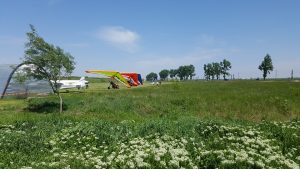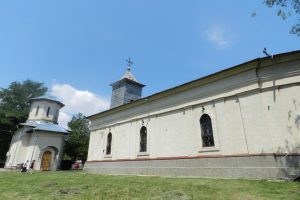

The emergence of the museum, belonged to the first concerns of the multifaceted personality of Nicolae Droc-Barcian, the Gymnasium director. He set up a botanical garden in 1876, and in 1883 a school museum of natural sciences, successively enriched with archaeological pieces and documents. The accumulated heritage was lost after the 1916 destruction of the city. The County Museum was established in 1934 by a decision of the Prefecture of Vlaşca. At the suggestion of the scholar Ion Andrieşescu, it was given the first name of the Professor of Archaeology, University of Iasi, Teohari Antonescu from Giurgiu. At the forefront of the institution was appointed, honorifically, the young teacher Dumitru Berciu, who headed it until 1948. After a hiatus of two years, it was restored and developed over two decades by Professor Gheorghe Radulescu, a graduate of Fine Arts, helped by thecurator-Restorer Mihai Ionescu.
Between 1950 and 1980 the museum was in turn, on all district, municipal and unincorporated section. County reverted in 1981, after correction to the territorial-administrative reform, with sections of history and ethnography and an Office for national cultural heritage. Between 1977-1990 his permanent exibition was called “Museum of struggle for independence of the Romanian people”. From 1993 it resumes its prewar owner, and between 1999-2005 it recovers the history and archeology exhibition departments.
By restitution of premises, of the ethnography section of Floreşti-Stoeneşti, its heritage was brought to Giurgiu, where a new permanent exhibition was inaugurated at the end of the 2006. Since 2003 into the administration of the county Museum has also undergone the Memorial House of the poet Petre Ghelmez of Gogoşari commune.
The room consecrated to glorious reign of Mircea cel Bătrân includes, inter alia, items found at the site of the city and facsimiles of documents issued in Giurgiu. A special space is reserved to Mihai Viteazul (Michael the Brave), whose victorious battles of 1595 (Putineiu, Stăneşti, Şerpăteşti, Calugareni, Giurgiu) have made this place famous throughout the Europe. The transition from medieval to modern (XVII – XVIII) era is presented by images of monuments in the region (Comana, Mironeşti, Dobreni Hereşti, Floreşti-Stoeneşti, Găiseni) by vintage prints and maps, weapons, ornaments, coins and other witnesses. Building the modern Romania is marked by the presentation of events which have marked the destiny of this country: the Revolution in 1848, the Union of Principalities (1859), winning of the state Independence (1877) and the Great Union (1918). The achievements are also highlighted, individualizing Giurgiu in the development of Romanian society, especially in transport and communications priorities.
Sections of the museum: Memorial History, Ethnography, History, Archaeology.



